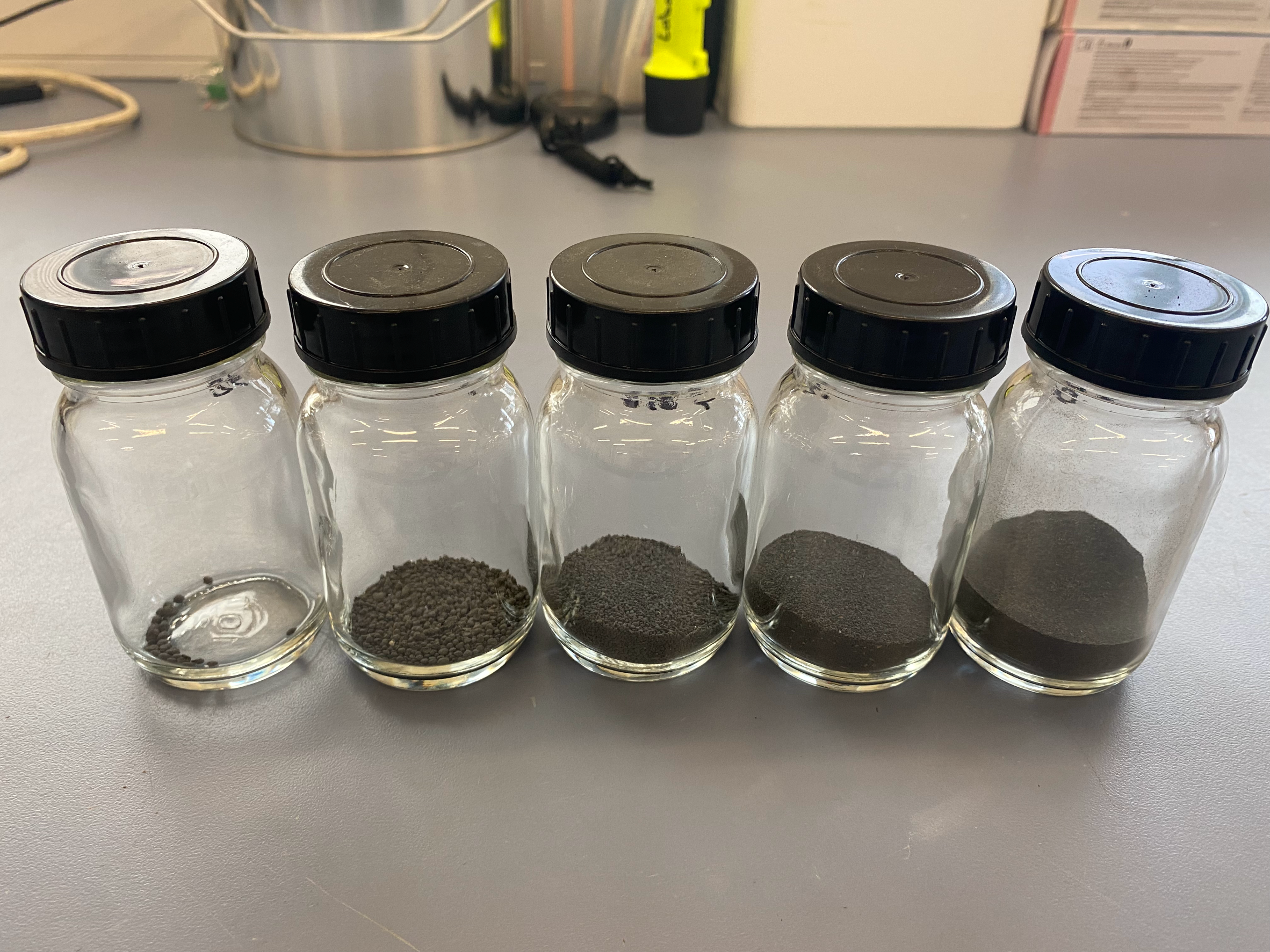What have we tried out to initially prove the dryer-grinder concept?
Reminder from our last post: In the past, thin film dryers have been optimized for minimizing dust formation. Our idea is that, if minimization was possible, it should also be possible to maximize it.
Thus, we took one of SMS’s thin-film dryers and dried sewage sludge paste under different operating conditions. We varied sludge feed rate, drying temperature and other parameters, and evaluated their influence on the reachable dry matter content and particle size.
What did we find out?
We were astonished that without modifying the dryer itself, but only by varying different operating conditions, the dryer managed to produce very fine material. About 60% of the particles were smaller than 250 µm in the best trials.

Figure 1: Dry sludge from one exemplary (not the best) trial. From left to right: Grain size > 2 mm; > 1 mm; > 0,5 mm; > 0.25 mm; < 0.25 mm
We know now that we are on the right path. And the experiments have brought us several additional encouraging findings:
- Grinding the material enhances the water removal, because the smaller the particles, the quicker the water evaporates. Like this, we have produced dust with literally no detectable water.
- This again means that the sludge will require less time to be dried, which reduces the heat losses of the process.
- As anticipated, the integrated grinding requires only a little more energy consumption than only drying. Meanwhile, the energy consumption of an additional mill would be significantly higher when grinding dried sewage sludge.
Due to these promising results, SMS is currently working on the design of the dryer-grinder pilot. With this pilot plant, we will test and optimise the dryer-grinder “in an operational environment”, i.e. in long-term trials at a sewage treatment plant.
If you would like to have a closer look at our work on the dryer-grinder, you can read our publicly available report about the pre-experiments here.
If you are curious about what we accomplish with our pilot plant, you will need some patience. But meanwhile, you can anticipate our next posts about…
…the 4th European Sustainable Phosphorus Conference in Vienna
…resource management in Vorarlberg at our partner Boehler
…a visit at our Belgian partners InsPyro and ResourceFull
and more.
For further information contact
Dipl.-Ing. Matthias Rapf
University of Stuttgart
matthias.rapf@iswa.uni-stuttgart.de
+49 711 685 65428

